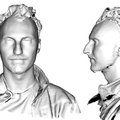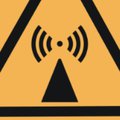 Rainbow Photonics AG is who I am thinking of.
Rainbow Photonics AG is who I am thinking of.
 @James Finch oh, this looks cool!
@James Finch oh, this looks cool!
 W-Band is interesting.
W-Band is interesting.
 @David Troetschel (Power Factor (loss Tangent) @15°C: 0.0001 - 0.0004) That is pretty good. The issue is more than just the cost of the raw material. Lithography resolution, layers, etc. all have to be taken into account.
@David Troetschel (Power Factor (loss Tangent) @15°C: 0.0001 - 0.0004) That is pretty good. The issue is more than just the cost of the raw material. Lithography resolution, layers, etc. all have to be taken into account.
 Amazed me observing the transition where the circuits turned into optical train like systems designs.
Amazed me observing the transition where the circuits turned into optical train like systems designs.
 for sure; just an idea
for sure; just an idea
 @David Troetschel I'll investigate. Thanks!
@David Troetschel I'll investigate. Thanks!
 A reminder that I'll post a transcript right after the chat, so everyone can refer back to links and such
A reminder that I'll post a transcript right after the chat, so everyone can refer back to links and such
 You can usually split a single sheet into about 20 but I have no idea how crazy you would have to be to try and smoosh em back together after laying traces haha
You can usually split a single sheet into about 20 but I have no idea how crazy you would have to be to try and smoosh em back together after laying traces haha
![]() Thanks!
Thanks!
 Any suggestions/requests for videos/ect.?
Any suggestions/requests for videos/ect.?
 @The Signal Path I've seen a lot of research in creating digital logic in optical ranges, are you aware of anything being produced in high mm range?
@The Signal Path I've seen a lot of research in creating digital logic in optical ranges, are you aware of anything being produced in high mm range?
 One of the challenges with my channel is that the topics can get fairly advanced, as a result the audience size is always going to be fairly small.
One of the challenges with my channel is that the topics can get fairly advanced, as a result the audience size is always going to be fairly small.
 ... I really like the sampling osciloscope project from Ted Yapo ... would be nice if you could feature this one in your videos
... I really like the sampling osciloscope project from Ted Yapo ... would be nice if you could feature this one in your videos
 Yes :) How to re-purpose existing devices to put your hands on microwave stuff while still using RTL-SDR / HackRFOne
Yes :) How to re-purpose existing devices to put your hands on microwave stuff while still using RTL-SDR / HackRFOne
 that is price baseline for most of folks
that is price baseline for most of folks
 @The Signal Path Maybe detailing circuit designs correlating the range of electronic design as well as optical like designs.
@The Signal Path Maybe detailing circuit designs correlating the range of electronic design as well as optical like designs.
 @Ethan Waldo Ultra-high speed digital communication is not really digital, it is mixed signal. Wireline links can be made to beyond 100Gbps.
@Ethan Waldo Ultra-high speed digital communication is not really digital, it is mixed signal. Wireline links can be made to beyond 100Gbps.
 @BSA Secure Ok. I will keep that in mind.
@BSA Secure Ok. I will keep that in mind.
 Can you make video about the cheapest chinese microwave test equipmen (spectrum analysets, VNAs)?
Can you make video about the cheapest chinese microwave test equipmen (spectrum analysets, VNAs)?
 @The Signal Path Might even be interesting to demonstrate making a cost effective spectrum analyzer interface into an oscilloscope. Might be a cost effective way to get more out of a scope and maybe in analog ways too first off.
@The Signal Path Might even be interesting to demonstrate making a cost effective spectrum analyzer interface into an oscilloscope. Might be a cost effective way to get more out of a scope and maybe in analog ways too first off.
 @michal777 It is amazing how much far the Chinese vendors have come in this regards. I will take a look again and see what I can find.
@michal777 It is amazing how much far the Chinese vendors have come in this regards. I will take a look again and see what I can find.
 But that almost always uses some specialized transceiver chip as opposed to nuts and bolts digital logic (i.e. NAND)
But that almost always uses some specialized transceiver chip as opposed to nuts and bolts digital logic (i.e. NAND)
![]() @michal777 - I agree there must be some good stuff out there for us cheapskates.
@michal777 - I agree there must be some good stuff out there for us cheapskates.
 @Ethan Waldo Yes, of course. These are not traditional logic gate circuits.
@Ethan Waldo Yes, of course. These are not traditional logic gate circuits.
 @The Signal Path Would be sweet and totally awesome to be able to detect from the Gamma down to DC... though that's a little excessive of a goal for a smaller package design... though would be interesting to see what the present state of the smallest package can look like.
@The Signal Path Would be sweet and totally awesome to be able to detect from the Gamma down to DC... though that's a little excessive of a goal for a smaller package design... though would be interesting to see what the present state of the smallest package can look like.
 thank you for the advice, i'll keep it in mind, I don't know if it is possible, but i think it would be interesting an overview or analysis of an IC or IC fabrication, i aIso loved the 24Ghz Doppler radar module, because of the nice analysis of a "simpler" circuit type.
thank you for the advice, i'll keep it in mind, I don't know if it is possible, but i think it would be interesting an overview or analysis of an IC or IC fabrication, i aIso loved the 24Ghz Doppler radar module, because of the nice analysis of a "simpler" circuit type.
 http://www.potatosemi.com/ produces stuff in the 1Ghz max range, and then there's one other that is ridiculously expensive that I can't find right now.
http://www.potatosemi.com/ produces stuff in the 1Ghz max range, and then there's one other that is ridiculously expensive that I can't find right now.
 @The Signal Path Seems as soon as the chips come out and there is an evaluation board available... I'm guessing there are Chinese out there trying to engineer the cheapest feasible modules to put on the market with the bare minimum interface capabilities.
@The Signal Path Seems as soon as the chips come out and there is an evaluation board available... I'm guessing there are Chinese out there trying to engineer the cheapest feasible modules to put on the market with the bare minimum interface capabilities.
 Hughes, ViaSat, other radioline producers allows people to get a hands on ready to re purpose equipment to send and receive 20Ghz+ stuff. Challenge is how to estimate performance of the Ka-Band (~19-30 Ghz) equipment that is widely available. Like impact of the RTL-SDR on the community.
Hughes, ViaSat, other radioline producers allows people to get a hands on ready to re purpose equipment to send and receive 20Ghz+ stuff. Challenge is how to estimate performance of the Ka-Band (~19-30 Ghz) equipment that is widely available. Like impact of the RTL-SDR on the community.
 @The Signal Path The Microwave Hearing Effect or Voice to Skull technologies would be interesting to watch demonstrated. Even acoustic hailing with microwaves would be interesting to watch.
@The Signal Path The Microwave Hearing Effect or Voice to Skull technologies would be interesting to watch demonstrated. Even acoustic hailing with microwaves would be interesting to watch.
 @Ethan Waldo This link from PotatoSemi made me winch: " High Frequency Noise Cancellation Technology."
@Ethan Waldo This link from PotatoSemi made me winch: " High Frequency Noise Cancellation Technology."
 @The Signal Path I've read that the transistors on an Intel chip are switching at 300 GHz, why is my CPU still running only at a few GHz? I guess at these frequencies the distances on the die matters and synchronization is a problem?
@The Signal Path I've read that the transistors on an Intel chip are switching at 300 GHz, why is my CPU still running only at a few GHz? I guess at these frequencies the distances on the die matters and synchronization is a problem?
 @The Signal Path Some are considering downconverting cost effectively. I'm wondering what the most cost effective evaluation board with the lowest noise floor, highest sampling rate and highest bandwidth is since is nice to see more of the spectrum real time. Seems the price has to be coming down with the new 5G chips out.
@The Signal Path Some are considering downconverting cost effectively. I'm wondering what the most cost effective evaluation board with the lowest noise floor, highest sampling rate and highest bandwidth is since is nice to see more of the spectrum real time. Seems the price has to be coming down with the new 5G chips out.
 @Frank Buss The fT & fMAX of FinFet devices in the 12nm range can easily be 300GHz. This does not mean you can make a processor at that frequency.
@Frank Buss The fT & fMAX of FinFet devices in the 12nm range can easily be 300GHz. This does not mean you can make a processor at that frequency.
 would it be possible with async logic instead of a central clock? I think there was some research about this
would it be possible with async logic instead of a central clock? I think there was some research about this
 @Frank Buss That's how a lot of the original room-sized computers were designed
@Frank Buss That's how a lot of the original room-sized computers were designed
 @Frank Buss The issue is complexity and what is to be achieved. An ARM core or x86 core requires a certain architecture for compilers to work with.
@Frank Buss The issue is complexity and what is to be achieved. An ARM core or x86 core requires a certain architecture for compilers to work with.
 @Frank Buss There is also a huge thermal issue to overcome.
@Frank Buss There is also a huge thermal issue to overcome.
 makes sense, so this would need new CPU architectures as well, new compilers etc., sounds interesting :-)
makes sense, so this would need new CPU architectures as well, new compilers etc., sounds interesting :-)
 @James Finch I am sure in the next few years equipment up to 40GHz will come down in price even more.
@James Finch I am sure in the next few years equipment up to 40GHz will come down in price even more.
 @Frank Buss That is once possibility, but there are a lot of other considerations. In the past 5 years, we have gone to parallelism, rather than faster serial rates for CPUs. And software has made that transition as well.
@Frank Buss That is once possibility, but there are a lot of other considerations. In the past 5 years, we have gone to parallelism, rather than faster serial rates for CPUs. And software has made that transition as well.
![]() @Frank Buss iirc the problem is that working regime in which that transistors achieve such high frequencies are not switching, completely off, completely on, and that translates into too much power dissipation
@Frank Buss iirc the problem is that working regime in which that transistors achieve such high frequencies are not switching, completely off, completely on, and that translates into too much power dissipation
 I wonder if there is a mirroring of tech like limiting CPU's main stream more-so with around 2.4GHz since the earliest research was using and if that has anything to do with the weird world or remote sensing?
I wonder if there is a mirroring of tech like limiting CPU's main stream more-so with around 2.4GHz since the earliest research was using and if that has anything to do with the weird world or remote sensing?
 @James Finch I don't believe there is any connection. At least I don't know of any.
@James Finch I don't believe there is any connection. At least I don't know of any.
 A question: How to understand the idea of impedance matching and mismatch in case of highly nonlinear circuits (mixers, doublers)? It seems easy in case of passive, linear networks but when the waves are for example chopped by diodes and they get any non-sinusoidal shape then... I've no idea how to relate that to the simple theory.
A question: How to understand the idea of impedance matching and mismatch in case of highly nonlinear circuits (mixers, doublers)? It seems easy in case of passive, linear networks but when the waves are for example chopped by diodes and they get any non-sinusoidal shape then... I've no idea how to relate that to the simple theory.
 Or is there something to do with the manufacturing capabilities since the infrastructure doesn't need to be re-tooled so much for the next smallest size or different method system.
Or is there something to do with the manufacturing capabilities since the infrastructure doesn't need to be re-tooled so much for the next smallest size or different method system.
 @michal777 You have to be careful about the terminology here. There is small signal impedance and large-signal impedance. Just because a waveform is square, it doesn't mean it is large-signal matching. The square signal has a lot more frequency content, so matching would have to be more broadband if you want to preserve the shape of the waveform.
@michal777 You have to be careful about the terminology here. There is small signal impedance and large-signal impedance. Just because a waveform is square, it doesn't mean it is large-signal matching. The square signal has a lot more frequency content, so matching would have to be more broadband if you want to preserve the shape of the waveform.
 @The Signal Path I've not read anything either... though wondered with the bus frequencies, clock speed and being at those more common easy to access ranges if there was something TEMPEST going on since those intel types demand a backdoor or way in from my course work.
@The Signal Path I've not read anything either... though wondered with the bus frequencies, clock speed and being at those more common easy to access ranges if there was something TEMPEST going on since those intel types demand a backdoor or way in from my course work.
 @michal777 When things become non-linear, then you have a whole other domain of signal matching.
@michal777 When things become non-linear, then you have a whole other domain of signal matching.
 @The Signal Path I would like to see some videos about basic microstrip structures
@The Signal Path I would like to see some videos about basic microstrip structures
- main theoretical ideas
- practical implementations, examples
- building them (DIY techniques)
- measuring them and see how it all worked (or not) according to theory
 +1 on that 4th item
+1 on that 4th item
 @RoGeorge Yes, that has been on my list. I have talked about some of those topics as part of various videos. But there is no dedicated video yet.
@RoGeorge Yes, that has been on my list. I have talked about some of those topics as part of various videos. But there is no dedicated video yet.
 Seems the volume of backhaul systems devices isn't so large scale and I'm guessing that doesn't aid the price point for the main stream consumer market.
Seems the volume of backhaul systems devices isn't so large scale and I'm guessing that doesn't aid the price point for the main stream consumer market.
 yes, especially the measurement part, thatk you
yes, especially the measurement part, thatk you
 @RoGeorge Sure, we can measure SP or TDR to verify.
@RoGeorge Sure, we can measure SP or TDR to verify.
 @RoGeorge et.al. Good call... even the range of "strip" and "line" designs overview would be interesting.
@RoGeorge et.al. Good call... even the range of "strip" and "line" designs overview would be interesting.
 With properties measured of course.
With properties measured of course.
 @James Finch I do have a PCB milling machine, so we can go from design, simulation, manufacturing and measuring in one video.
@James Finch I do have a PCB milling machine, so we can go from design, simulation, manufacturing and measuring in one video.
 That would be fantastic
That would be fantastic
 Well that was fast - we're already through an hour. We'll let Shahriar go if he has to, but of course everyone is free to stay around and continue the discussion. I just want to say thanks to Shahriar for coming on today and closing the 2019 Hack Chat series in great style. I really appreciate it!
Well that was fast - we're already through an hour. We'll let Shahriar go if he has to, but of course everyone is free to stay around and continue the discussion. I just want to say thanks to Shahriar for coming on today and closing the 2019 Hack Chat series in great style. I really appreciate it!
![]() @The Signal Path Thank you!
@The Signal Path Thank you!
 @The Signal Path Thanks
@The Signal Path Thanks
 You are very welcome and thank you all. Especially to my Patreon supporters who keep the lab going and allow me to purchase the instruments/components I need for the videos.
You are very welcome and thank you all. Especially to my Patreon supporters who keep the lab going and allow me to purchase the instruments/components I need for the videos.
 Without the Patreon supporters, it would not be possible at all.
Without the Patreon supporters, it would not be possible at all.
 Re-purposing 20$ radar to measure (estimate) performance ...or just to know if signal appeared in the XXGhz band woud be interesting. E.g practical removing of filters to extend detection rage
Re-purposing 20$ radar to measure (estimate) performance ...or just to know if signal appeared in the XXGhz band woud be interesting. E.g practical removing of filters to extend detection rage
 Yes, thank you for sharing your wealth of knowledge and experience with mere mortals.
Yes, thank you for sharing your wealth of knowledge and experience with mere mortals.
 Cheers all, if you like to find the videos and subscribe you can go here:
Cheers all, if you like to find the videos and subscribe you can go here:
 @The Signal Path Excellent, thanks for your time and consideration. Excellent topics looking forward to seeing and more of in general.
@The Signal Path Excellent, thanks for your time and consideration. Excellent topics looking forward to seeing and more of in general.
 Bye everyone! :)
Bye everyone! :)
 We'll be back in January, so watch for announcements on those Chats. And of course, if you've got anyone you want to hear from on the Hack CHat, or if you've got something cool to discuss, drop me a line - danmaloney@hackaday,com
We'll be back in January, so watch for announcements on those Chats. And of course, if you've got anyone you want to hear from on the Hack CHat, or if you've got something cool to discuss, drop me a line - danmaloney@hackaday,com
 Thanks everyone! Transcript coming up soon.
Thanks everyone! Transcript coming up soon.
 Thank you too Dan
Thank you too Dan
 Thanks Dan, et.al.
Thanks Dan, et.al.
 Bye & see you soon in the videos, thank you for sharing!
Bye & see you soon in the videos, thank you for sharing!
:o)
 Lutetium
Lutetium
Discussions
Become a Hackaday.io Member
Create an account to leave a comment. Already have an account? Log In.